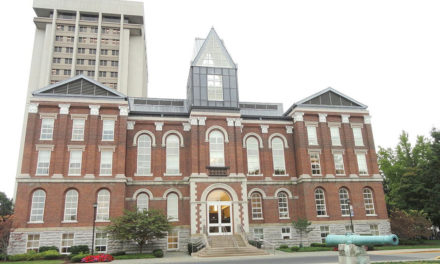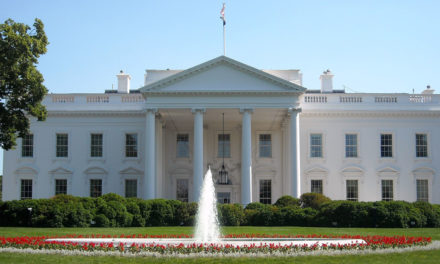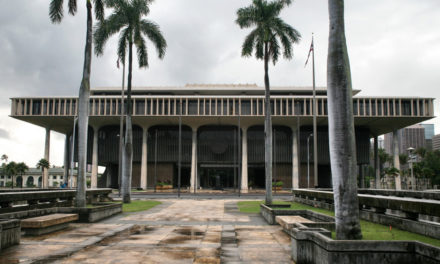Can a public high school fire a coach for taking a knee and praying quietly at the fifty-yard line after a football game? The answer to that question was explored by the justices of the U.S. Supreme Court on April 25 during oral arguments in the case of Coach Joe Kennedy, who was fired in 2015 from his coaching position at Bremerton High School in Bremerton, Washington.
Supreme Court arguments can appear obtuse to the layman, peppered as they are with legal “hypotheticals” – i.e., where the questioner tweaks the facts of the case slightly – which at first glance don’t seem to have anything to do with the actual facts of the case. But as the justices explored the arguments from lawyers for the parties, using questions dominated by such hypotheticals, the scheduled one-hour oral argument stretched an additional 50 minutes.
Coach Kennedy was represented by the veteran Supreme Court advocate, Paul Clement, and the school district was ably represented by attorney Richard Katskee.
Clement began his argument on behalf of Kennedy with a brief summary of the case:
“When Coach Kennedy took a knee at midfield after games to say a brief prayer of thanks, his expression was entirely his own,” Clement told the justices. “That private religious expression was doubly protected by the Free Exercise and Free Speech Clauses.
“When the School District fired him for that fleeting religious exercise out of endorsement [of religion] concerns, it not only violated the First Amendment, but it ignored a veritable wall of this Court’s precedents that make clear that a school does not endorse private religious speech just because it fails to censor it.”
Katskee was equally adamant in his opening remarks.
“No one doubts that public school employees can have quiet prayers by themselves at work even if students can see,” he began. “If that were the issue, there wouldn’t be a case here because the District allowed that.
“But that wasn’t good enough for Mr. Kennedy. He insisted on audible prayers at the 50-yard line with students. He announced in the press that those prayers are how he helps these kids be better people.”
The nearly two hours of questioning revealed stark differences in what each side understood the facts to be in the case as well as how the law and the court’s precedents applied to those facts.
I know what you want to ask me. “So, which way were the justices leaning after all was said and done?”
That’s not an easy question to answer. Sometimes the questioning gives one or more of the justices away, and sometimes not.
It did appear as if the three liberal justices, Stephen Breyer, Sonia Sotomayor and Elena Kagan were fairly skeptical of Coach Kennedy’s claim that his firing violated his First Amendment rights of free speech and religion. And while the conservative justices were definitely not hostile to Kennedy’s claims, neither were they openly supportive, although questioning from Justices Brett Kavanaugh and Samuel Alito to the school district’s lawyer was especially tough.
So, what are the factual and legal issues at the heart of this case?
The questions and hypotheticals from the justices involved, most often, an attempt to discern whether Coach Kennedy’s prayers at mid-field were “private” prayers or, because they took place at a school event at which he performed his coaching duties, did they become “government speech” that the school district could regulate?
Government speech is controlled by and, in essence, “owned” by the government, and it can pick and choose what it wants to say and when. Private speech – including religious expression – not so much.
That’s why the distinction between private and government speech in this case is so important.
For this case, the important question is, in a school context, where do you draw the line between private speech and private religious expression and government speech. Is there a line? Can a school prohibit any kind of expression it doesn’t like from its teachers and coaches on campus or while they’re “on the clock”? What about off campus?
The Supreme Court ruled in 1969 that teachers do not shed their constitutional rights to freedom of speech or expression at the schoolhouse gate. But neither are those rights beyond the reasonable reach of their employers’ rules. For example, few of us these days want to see our children’s public school teacher leading our kids in prayer to some deity of the teacher’s or school’s choosing.
At a private, religious school, sure. After all, that’s presumably what you’re paying for.
Constitutional principles as they apply to the rights of teachers, coaches and students is all about drawing the proper lines.
Over the years, such line-drawing occurs on a case-by-case basis as different sets of facts are litigated in the courts. That’s how the American legal system sorts these things out over time. Sometimes the Supreme Court expands those boundaries in subsequent cases; sometimes the justices decide they’ve gone too far and limit or even overturn their previous decisions.
Sometimes it’s all about clarifying existing principles to fit fact situations we haven’t seen before.
Did it matter, for example, that at times, some of the football players and even adults joined Kennedy on field for his 15- to 30-second prayer? Or that the press covered it after Kennedy’s disagreements with the district became known? Did that turn an otherwise private prayer into something more public that the school district had a right to censor?
The justices also explored the issue of whether the coach’s prayer was “coercive” in any respect? Did it, for example, subtly or implicitly pressure players to pray with him who thought, perhaps, that joining in would get them more playing time? Would it even matter if there was?
Here’s another big issue the justices tackled. Can schools prohibit overt expressions of faith by school employees out of an abundance of caution, in order to prevent being sued by someone offended by it? That’s an issue the justices could clear up in their decision in this case.
Those are the types of questions that came fast and furious to both lawyers from the nine justices.
The case may end up being a conventional split between conservative and liberal justices with a result in Coach Kennedy’s favor, but even that is hard to pin down. Will it be 6-3? Or 5-4? Or is there another alternative that a majority of the justices might be receptive to? Ultimately, it’s hard to read the court’s tea leaves by listening to oral arguments.
We should get a decision before the court’s current term ends in late June.
The case is Kennedy v. Bremerton School District.
Related:
Fired for Praying, Coach Kennedy Back at Supreme Court for Second Time
Coach Kennedy Will Appeal 9th Circuit Decision Denying His Right to Pray After Football Games
SCOTUS Declines Religious Freedom Cases, But With a Positive Twist
Instead of Firing Coach Kennedy, Bremerton High Should Be Hiring More Like Him
Photo from First Liberty.






